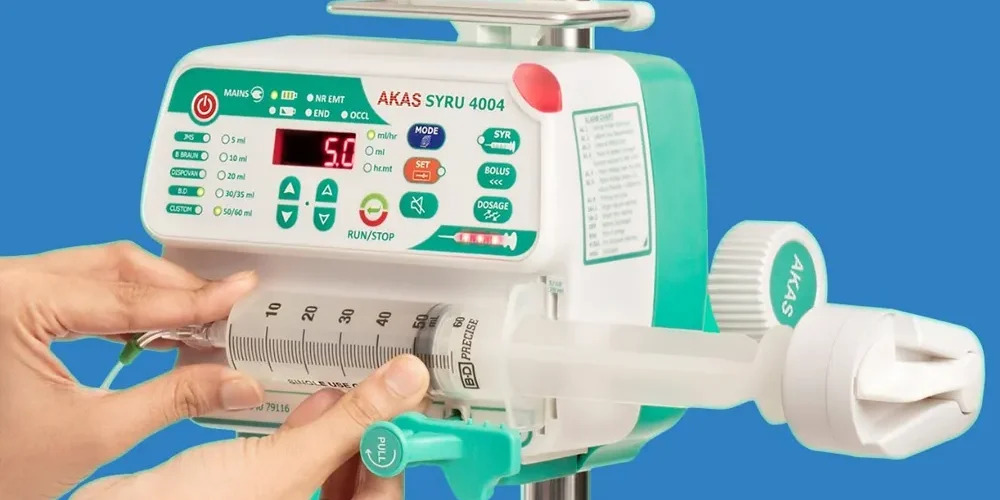Hospitals and medical institutions rely heavily on volumetric pumps for accurate and safe drug delivery. Ensuring these devices function properly is vital for patient safety and treatment effectiveness. Volumetric pump troubleshooting is not only about fixing technical issues but also about maintaining clinical confidence and workflow efficiency.
Healthcare teams must be prepared to address common challenges quickly and effectively. Prompt troubleshooting reduces treatment delays, enhances patient comfort, and supports hospital efficiency. Understanding the nuances of volumetric pump operation helps staff prevent errors and maintain precise infusion rates.
Common Volumetric Pump Issues
Volumetric pumps, while advanced, can encounter occasional problems that require attention. Some common issues include:
- Flow Rate Errors: Incorrect flow can occur due to blocked lines, improper settings, or air in the tubing.
- Occlusion Alarms: Alarms may indicate line kinks, clot formation, or improper connections.
- Battery or Power Failures: Interruptions in power supply can disrupt infusion, especially in portable units.
- Calibration Inconsistencies: Pumps need regular checks to ensure accuracy over time.
- Mechanical or Sensor Faults: Wear and tear or sensor misalignment can impact performance.
Step-by-Step Troubleshooting Guidelines
A structured approach helps healthcare teams resolve volumetric pump issues efficiently. Follow these practical steps:
- Check Connections: Ensure all tubing and connections are secure, free from kinks, and correctly positioned.
- Inspect for Air Bubbles: Remove any trapped air to prevent inaccurate flow rates or patient discomfort.
- Verify Settings: Confirm the infusion rate, volume, and treatment protocol match the prescribed orders.
- Monitor Alarms: Respond promptly to occlusion, flow, or pressure alarms by identifying the underlying cause.
- Examine Power Supply: Confirm batteries are charged and backup systems are functional for uninterrupted care.
- Perform Calibration Checks: Regular calibration ensures volumetric pumps maintain accuracy and reliability.
- Document and Report: Record troubleshooting steps and outcomes to support continuous quality improvement.
Preventive Measures for Optimal Performance
Prevention is always better than correction when it comes to volumetric pump operation. Implementing routine measures reduces the likelihood of unexpected failures.
- Regular Maintenance: Follow manufacturer-recommended service schedules for cleaning, inspection, and calibration.
- Staff Training: Ensure all clinical staff are trained in device operation, troubleshooting, and safety protocols.
- Use Approved Accessories: Only compatible tubing, connectors, and infusion sets should be used to prevent errors.
- Monitor Usage Patterns: Track pump performance and maintenance history to identify recurring issues proactively.
- Emergency Protocols: Establish procedures for rapid response to device alarms or power failures.
Tips for Enhancing Team Efficiency
Efficient troubleshooting not only resolves device issues but also supports overall hospital workflow. Consider the following strategies:
- Collaborative Approach: Encourage communication between nursing staff, biomedical engineers, and clinical supervisors.
- Checklists for Common Errors: Maintain a standard checklist for quick diagnosis of flow rate errors, occlusions, or alarms.
- Simulation Training: Use real-case scenarios to train staff on troubleshooting without compromising patient care.
- Continuous Feedback: Encourage staff to share observations and insights for ongoing improvement of device usage.
Integrating Technology for Reliable Use
Modern volumetric pumps are increasingly integrated with smart technology. These features can enhance troubleshooting and preventive care:
- Smart Alerts: Real-time notifications help staff address minor issues before they escalate.
- Data Logging: Recorded infusion data aids in diagnosing recurring problems and maintaining accurate patient records.
- Remote Monitoring: Some pumps allow monitoring through hospital systems to ensure consistent performance.
Conclusion
Effective volumetric pump troubleshooting ensures precise drug delivery, enhances patient safety, and supports hospital efficiency. By implementing structured troubleshooting steps, preventive measures, and team training, healthcare institutions can maintain optimal device performance. Partnering with reliable manufacturers is essential to access high-quality, durable, and accurate devices. Akas Infusion manufactures world-class drug delivery devices, including volumetric pumps, designed to meet the exacting standards of hospitals, clinics, and healthcare facilities. Their commitment to quality and innovation ensures dependable performance, supporting both patients and healthcare teams in delivering safe, effective care.





Comments